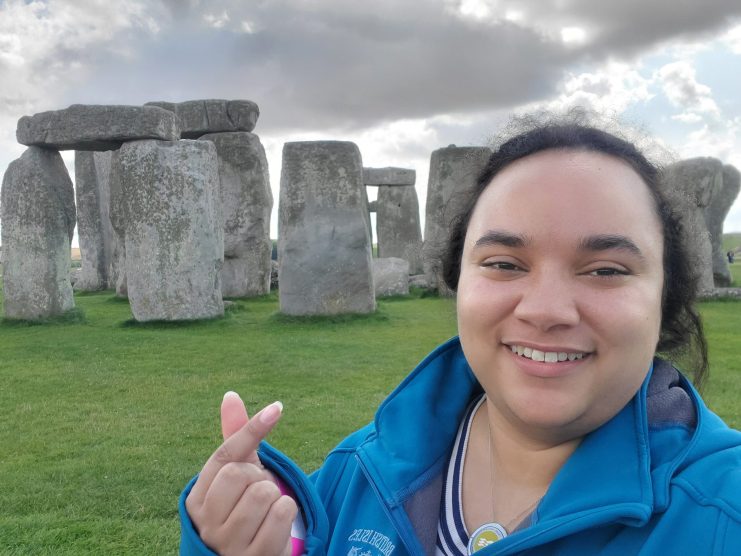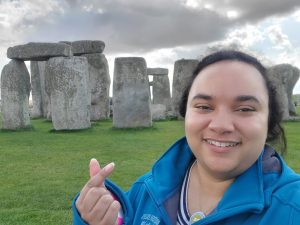
“Can I Change My Answer?”: How Peer Talk Transformed Student Writing
“Can I change my answer?”
That was the question a student asked after a quick partner discussion about Trevor Noah’s Born a Crime. She had just shared her response aloud and heard her partner’s take. And suddenly, she had more to say.
I paused.
“Yes. Yes, you can.”
That moment in October changed everything for me. It was the first time I clearly saw that students could strengthen their writing not by staring harder at a prompt, but by talking through their thinking first. I had been focused on helping my 9th-grade students craft more sophisticated, evidence-based responses. But what I hadn’t fully understood was just how essential structured conversation is to developing ideas. Thinking doesn’t always happen in solitude; more often, it happens out loud. From that day on, I stopped treating writing as the first step of the process. Instead, I began seeing it as the second draft of thinking.
When the year began, many of my students’ responses were surface-level. They’d write something like, “This shows he’s brave,” without clearly stating a claim or explaining how the evidence supported their thinking. Their ideas were there—buried beneath vague phrasing or disconnected logic—but their writing didn’t reflect the depth I knew they were capable of.
As part of a Lead by Learning inquiry group focused on supporting English Learners with Oakland Unified School District’s English Language Learner Multilingual Achievement Office (ELLMA), I wanted to shift this pattern. My inquiry question became: How can I get my students to develop more sophisticated, elaborated, evidence-based responses to questions?
I was introduced to the Stronger-Better-Clearer (SBC) protocol. It’s a simple, yet powerful structure: students write a short response, share it with a peer, listen to their partner’s version, and then revise their own based on the exchange. I used this routine early in the year with some hesitation. Reading your own writing out loud is vulnerable, especially for students still building academic language. But something happened when they started listening to each other: they noticed stronger word choices, clearer reasoning, and ideas they hadn’t thought of.
They started revising—not because I told them to, but because they wanted to.
The real turning point wasn’t loud or dramatic. It happened during a gallery walk activity when I overheard a student say, “Oh! I didn’t think of that until you said it.” That small sentence revealed so much. It was the kind of spontaneous discovery I’d been trying to spark with mini-lessons and rubrics, but peer dialogue made it visible, immediate, and authentic. Their thinking was evolving in real time because of one another.
As students became more confident with the routine, I adapted it. I added scaffolds—sentence starters for reasoning, anchor charts with academic verbs, and student-created success criteria. I modeled revisions on the board and invited students to co-analyze responses. SBC moved from a weekly speaking activity to an embedded classroom habit.
In March, I gave an exit ticket asking students to underline their claim, evidence, and reasoning in a short response. Over 80% did so successfully, and their reasoning was clearer and more developed than I had seen earlier in the year. One student wrote, “This implies Minerva is willing to challenge gender roles because she values justice more than safety.” Gone were the vague responses like, “This shows she is strong.” Now, their thinking was precise, and their writing reflected it.
The most exciting part? They weren’t just parroting sentence frames I’d given them. They were using academic language they had built together—language that grew out of conversation, revision, and peer feedback. SBC helped them learn to listen not just for correction, but for growth.
By the time we reached In the Time of the Butterflies by Julia Alvarez in April, I had stepped back. Students ran the SBC routine on their own, revised independently, and offered meaningful feedback grounded in the same tools and norms we had cultivated all year. One student’s final analysis stood out: “Her resistance shows that individuals can disrupt oppressive systems, even at personal risk.” It was thoughtful, sharp, and grounded in evidence. A far cry from where we began.
This process wasn’t just transformational for my students. It was a mirror for my own growth as a teacher. In our Lead by Learning inquiry group, we were encouraged to bring our “messy” thinking, our raw data, and our uncertainties into a shared space. Instead of planning in isolation or interpreting student work alone, I had the chance to reflect alongside other educators. That collaborative inquiry—sharing student work, posing questions, and getting supportive challenges—helped me refine each step.
What I asked of my students—write, talk it through, revise—I was also asked to do as a professional learner. And it made my practice better.
This year shifted my mindset in small but lasting ways. I used to think writing needed to be perfected in silence. Now I believe the best thinking often comes through messy, collaborative work. I used to give feedback after a final draft; now, I embed feedback into the process, making revision feel natural, not corrective.
Next year, I plan to launch Stronger-Better-Clearer from week one. I want students to co-construct our success criteria and define what “strong writing” looks like in their own voices. I want to continue embedding low-stakes revision and peer dialogue into every unit—not just to improve writing, but to deepen thinking.
Because when a student asks, “Can I change my answer?” what they’re really saying is, “I’ve grown.”
And that’s the kind of learning I want to center—every day.
 Laurel Sinclair is a High School English teacher who began teaching during the pandemic and currently teaches 9th and 10th grade in California. She is passionate about inspiring students to find both meaning and joy in reading and to see their own writing as a tool for personal and academic growth. Outside the classroom, she loves to travel, explore new stories, and get lost in a good book wherever she goes.
Laurel Sinclair is a High School English teacher who began teaching during the pandemic and currently teaches 9th and 10th grade in California. She is passionate about inspiring students to find both meaning and joy in reading and to see their own writing as a tool for personal and academic growth. Outside the classroom, she loves to travel, explore new stories, and get lost in a good book wherever she goes.
Interested in working with Lead by Learning to support your educators and teacher leaders? Connect with a member of our team to learn more about our partnerships.
